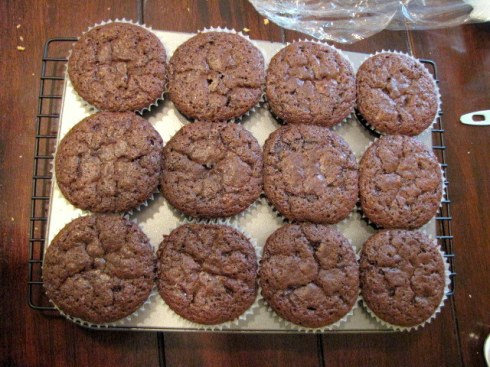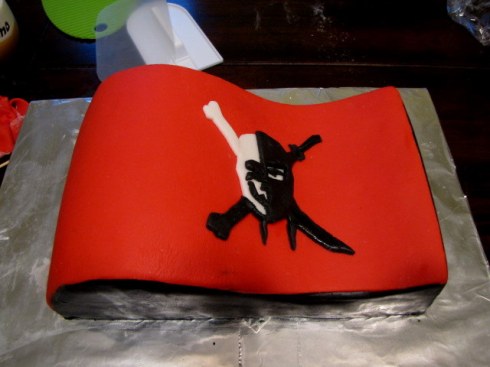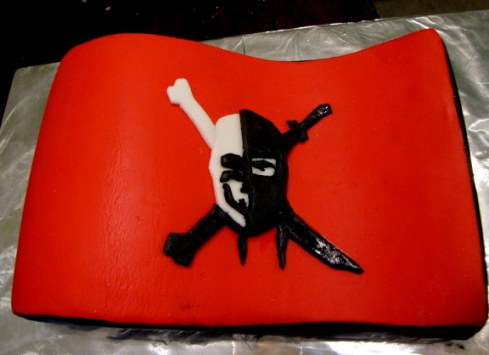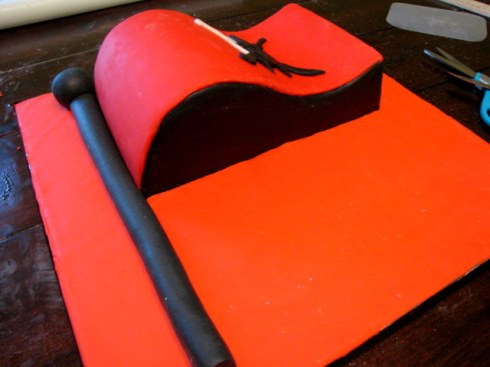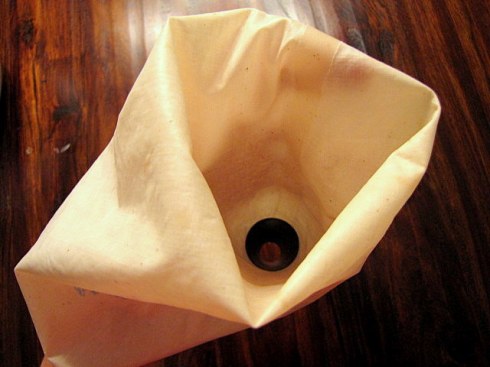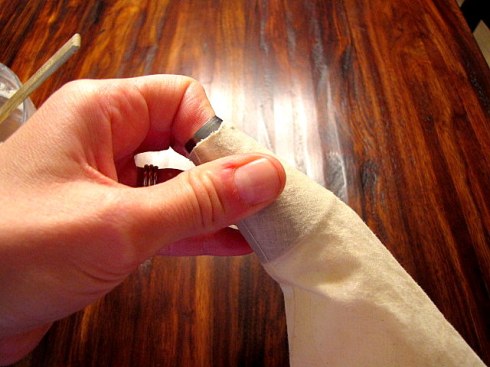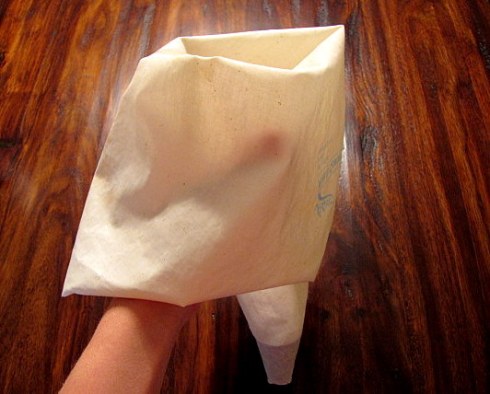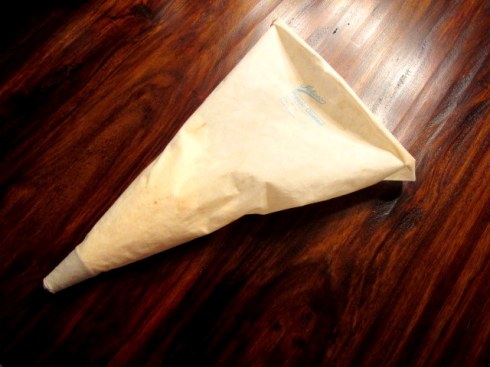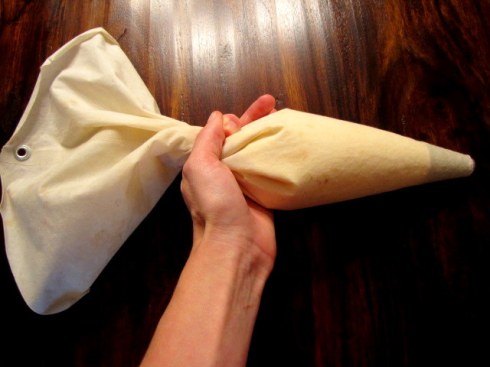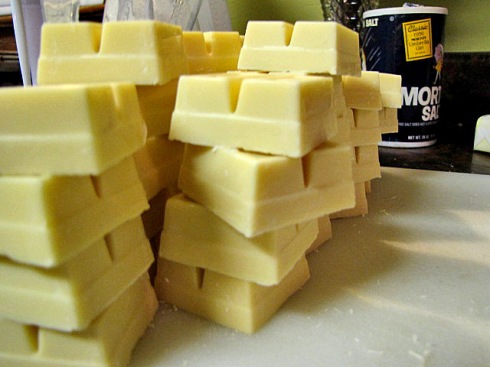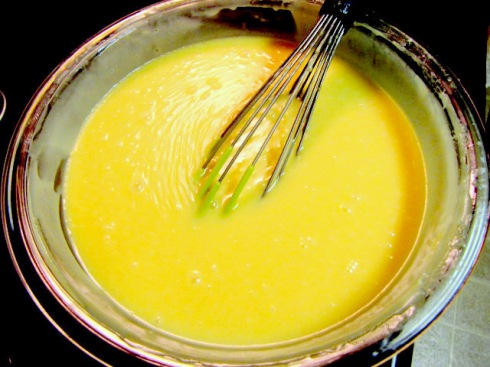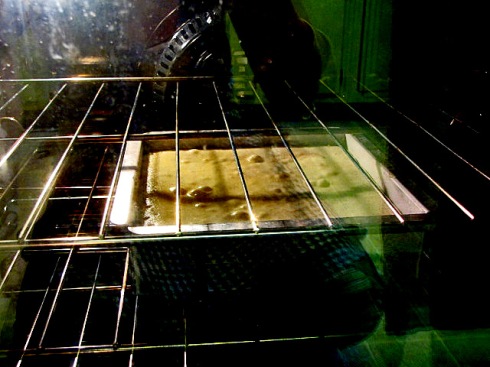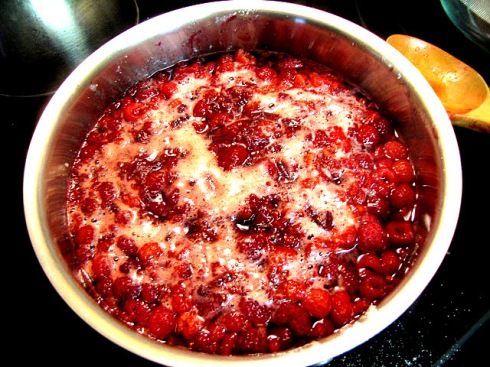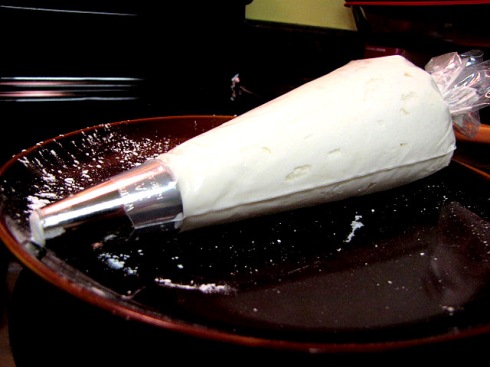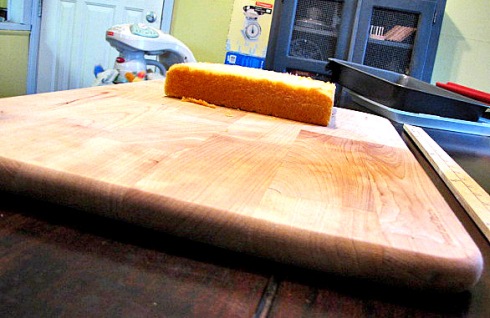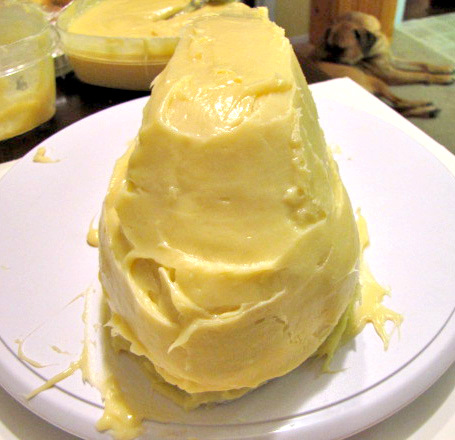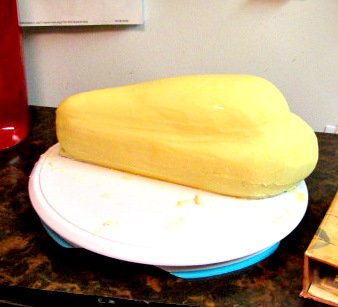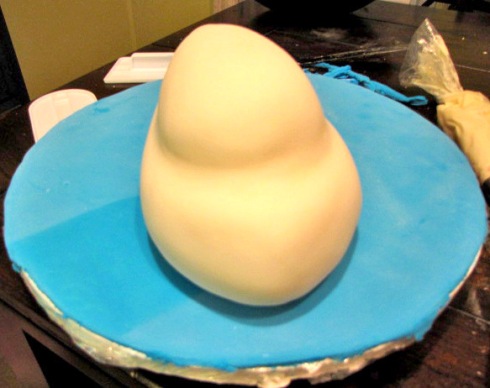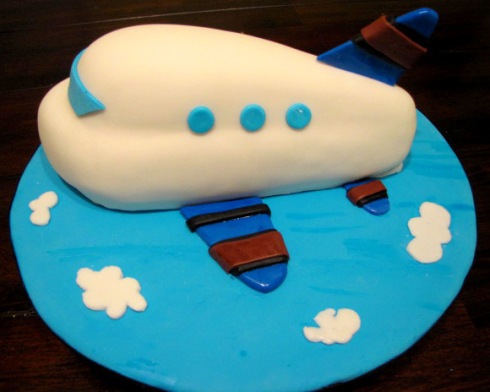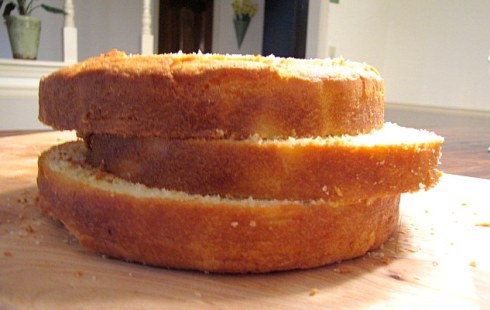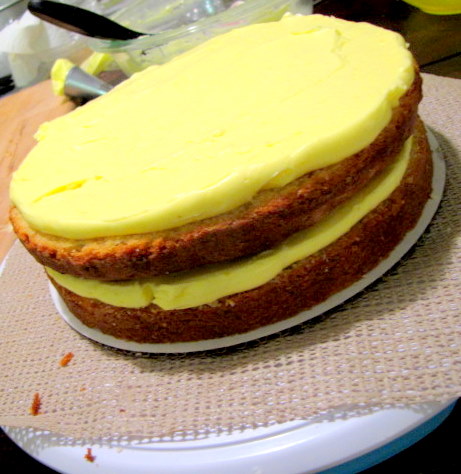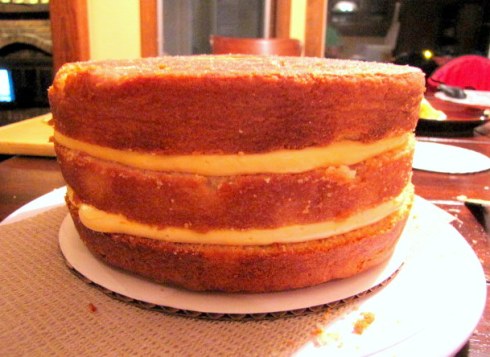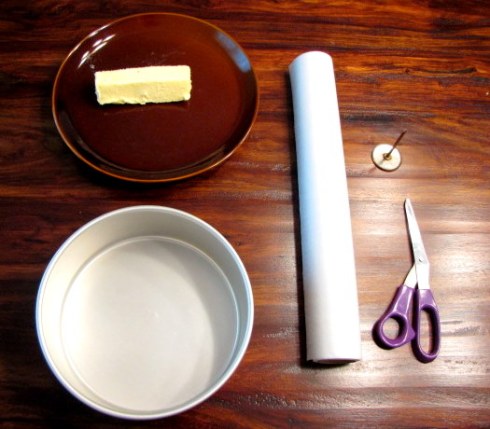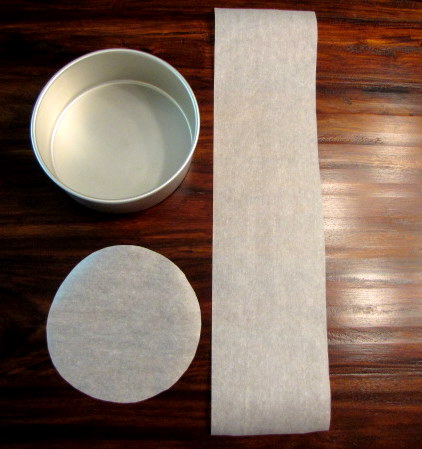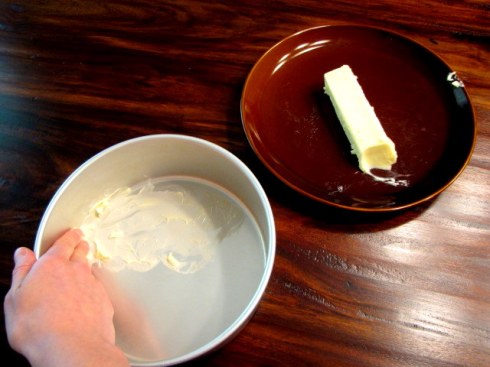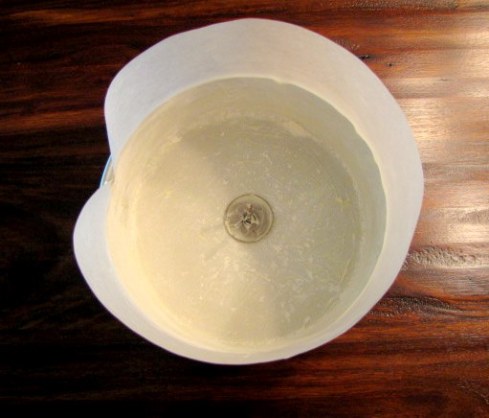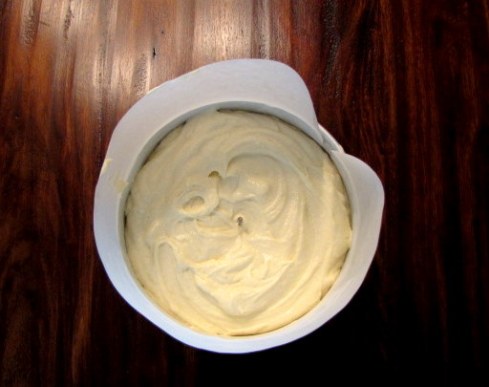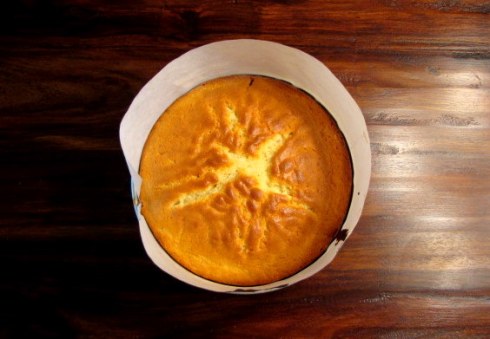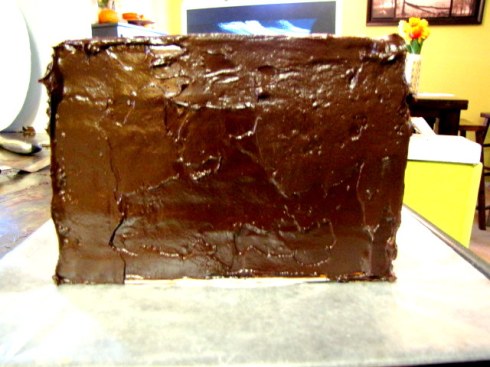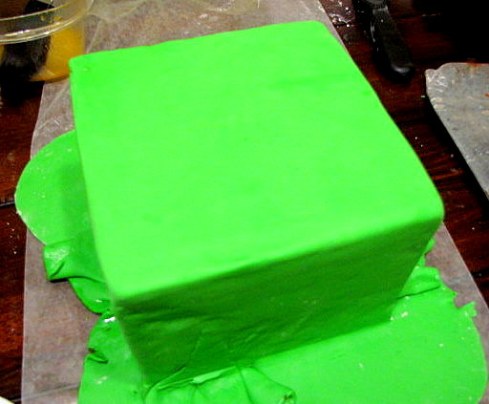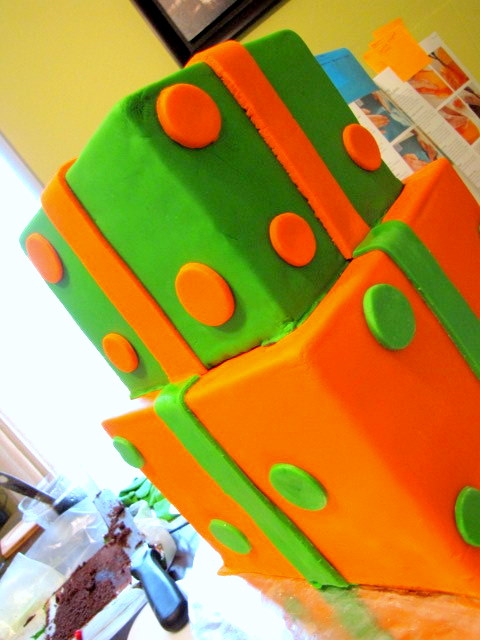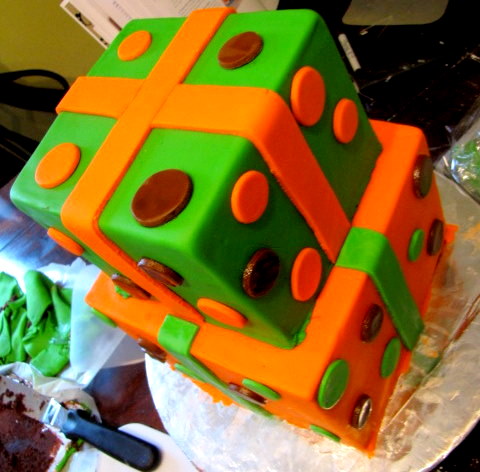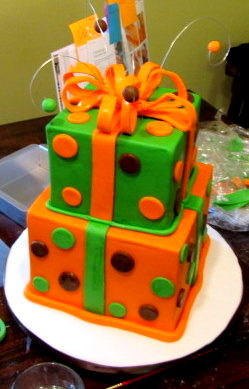Every baker has their own way, but I thought I’d share with you what my favorite beginner supplies are. These are the items I use most. You can always add other specialty supplies later on when you get a feel for the process of baking and decorating.
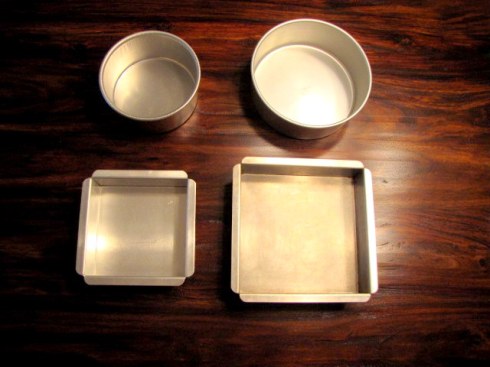 I begin with pans. I have a wide selection of sizes these days, but these four are my top picks: a 6″ and 8″ round, and a 6″ and 8″ square. I don’t recommend sinking a ton of money on lots of different pans unless it’s burning a hole in your pocket and you have tons of huge cake orders piling up before you even get started. My guess is that you’ll start with birthdays or special occasion cakes, and work your way up. You can purchase cake pans at Michael’s, Wilton online, or even some Wal-Mart stores (I’d give you the link, but they don’t have any decorating products on their website that I could locate).
I begin with pans. I have a wide selection of sizes these days, but these four are my top picks: a 6″ and 8″ round, and a 6″ and 8″ square. I don’t recommend sinking a ton of money on lots of different pans unless it’s burning a hole in your pocket and you have tons of huge cake orders piling up before you even get started. My guess is that you’ll start with birthdays or special occasion cakes, and work your way up. You can purchase cake pans at Michael’s, Wilton online, or even some Wal-Mart stores (I’d give you the link, but they don’t have any decorating products on their website that I could locate).
So far, my favorite cake pans are Magic Line. Though Wilton is a great brand for beginners, Magic Line is preferable to me because they are far more durable. Their square pans (pictured above) have extremely sharp edges and vertical sides. The corners of Wilton pans are more rounded, and the sides of their square pans are not perfectly vertical. Now, to be fair, I do use them. I just prefer Magic Line if I have the choice.
 Here’s a rundown of my top favorites, reading from left to right, and from the top down.
Here’s a rundown of my top favorites, reading from left to right, and from the top down.
1) A Scale; yes, you can live without it, but MAN it’s helpful!
2) Waxed Paper; parchment paper is helpful too, but I find waxed paper to be more versatile,
3) A Fondant Roller; the fact that this is a must-have is pretty self-explanatory,
4) Foil; I have decorative foil pictured above, but standard foil is just as useful, if not more so,
5) A Yard Stick; when making a cake with fondant, you cannot live without a means of measuring, and to me, a yard stick is the easiest way to be precise,
6) Large and Small Palette Knives,
7) Dowel Rods; you need these if you plan to incorporate more than one tier to your cake,
8 ) Setup Boards in the size and shape of your cake; in addition to these boards, you will want to have thicker “Display Boards”. I often cut my own boards out of foam board.
9) A Turntable; many sizes, materials, and heights are available in turntables, but starting with a small and cheap plastic one is totally fine. (Here’s a secret: I haven’t upgraded to a professional grade one yet).
10) Wooden Skewers; this is a baking must-have. Rather than testing the insides of your cake while it’s baking with a toothpick, use these puppies. They’re easy to find, and you reduce your risk of burns since they’re significantly longer than a toothpick!
11) Color Paste; individual colors can be purchased at cake supply stores and craft stores alike, but they can also be purchased in packages.
12) Fondant Smoothers; you are going to need these just as much as a roller.
13) Non-stick Liner; I get a roll of this stuff at Wal-Mart, and place it between my turntable and cake to keep it from slipping while I’m working.
14) A Cake Leveler; I list this item because it saves time, not because it’s 100% necessary.
15) Putty Knives; I picked these up at my local hardware store for under 5 bucks. They work beautifully when icing a cake with either ganache or buttercream.
16) Pastry Brush; if you don’t have one, get one.
17) Small and Large Whisks
18) Pizza Cutter; cutting fondant is way more enjoyable with a pizza wheel
19) Small Paint Brush; once you are in the decorating phase of your creation, a small brush will be your best friend
20) A Calculator; now, before you roll your eyes and tell me you’re too “artsy for math”, cake decorating is as much a science as it is an art. Just trust me- get a calculator.
 Now get shopping so we can start!
Now get shopping so we can start!
Tags: Cake Supplies, Magic Line Cake Pans, Michael's, Wal-Mart, Waxtex, Wilton

